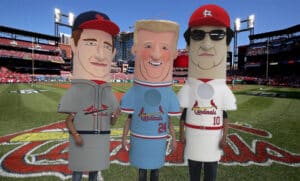
Training to Become a Racing Mascot
Have you been given the chance to race as a racing mascot? This blog will tell you everything you need to know to get that 1st place trophy. Let the training begin!
Upon reading this headline, you may wonder, what is a mascot Handler? A Mascot Handler is basically a mascot’s security guard, guide, and confidant all in one. As fun as it is to be a performer inside a mascot costume, the confines of the suit itself can be limiting. Consider the following:
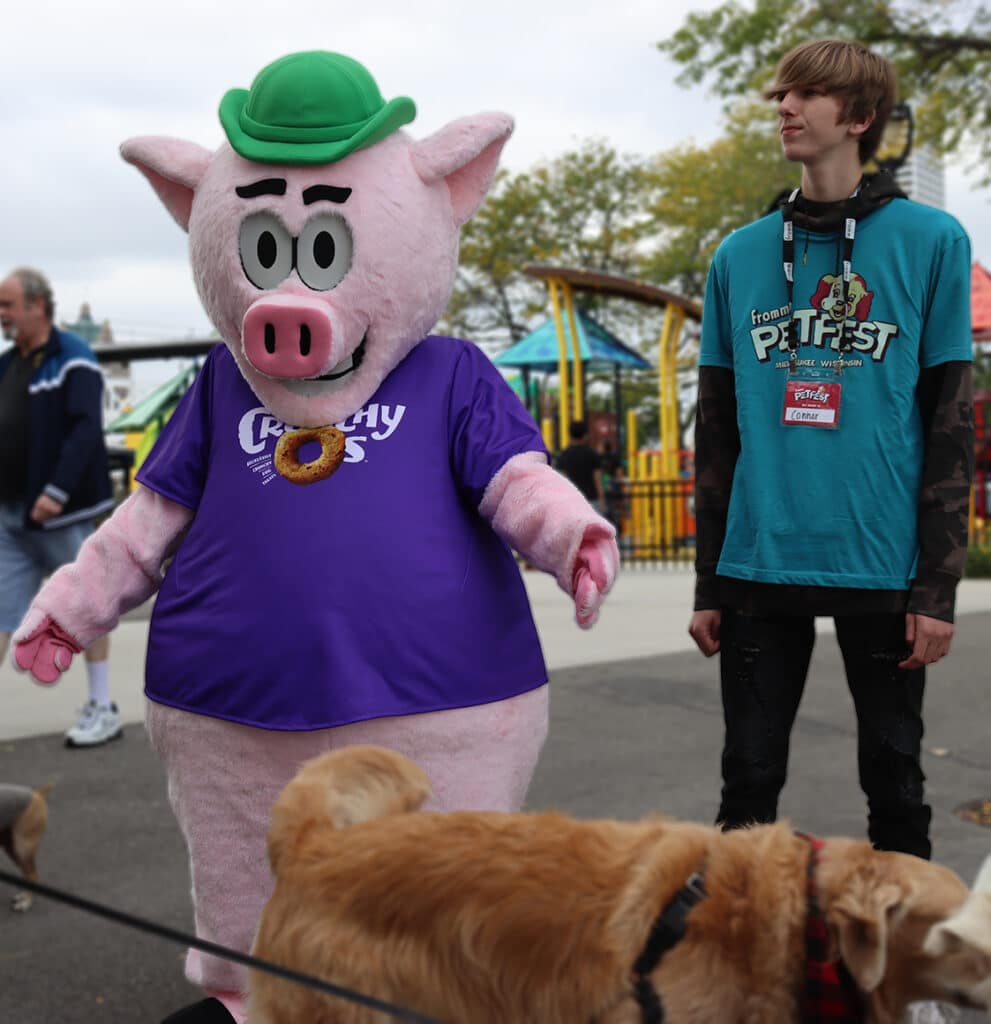
No mascot is complete without having a handler by their side. Having a mascot handler is just as important as having the mascot itself. The handler is there to make the mascot performer’s life way easier, and to improve the audience’s experience. In preparation for this blog, we attended Fromm Family Food’s 2022 Fall Petfest right here in Milwaukee. We’ve made two mascots for them, Porky the Pig and Ernie the Dog, and they reached out to give us the opportunity to perform in the costumes and manage them throughout the festival.
Here we see Porky and Ernie, we will refer to them throughout this blog as examples.
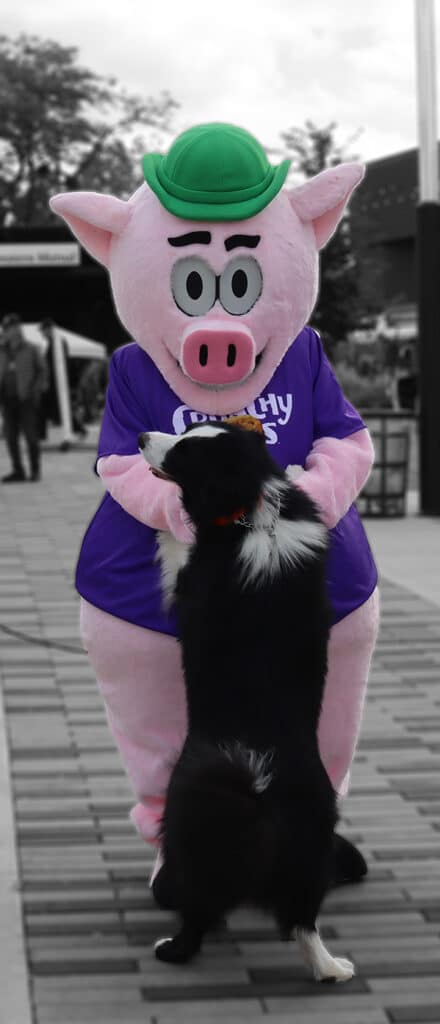

In total, there were 4 members of the mascot team. Two of our local mascot technicians were inside the suits, while another mascot technician acted as a handler. Fromm also gifted us one of their employees for the day who managed all our behind-the-scenes access. As a team they roamed the festival grounds taking pictures, interacting with vendors, and even celebrated Ernie’s 8th birthday. While you don’t need a team this big normally, we felt it was a good size since we had 2 mascots in action and tons of fury faces to see!
Through this event and the several decades of experience as mascot manufacturers, we’ve learned and broken down everything a mascot handler needs to do to be a success. So, without further delay lets learn how to handle being a mascot handler!
Mascots need to maintain the illusion that they are a character, and nothing breaks that illusion more than hearing a performer talk. As a result, most mascots are completely silent in-person. This means that your performer can’t verbally communicate to you in public. This is where hand signals come into play. Asking a performer simple yes or no questions that they can reply to with a head shake, or a thumbs up/down is a great way to establish clear communication.
Another thing a handler should be responsible for is translation. Since a mascot can’t talk, they may use hand signals and gestures to interact with people. However, people may not always understand what the mascot is trying to communicate. Here is an example:
At Petfest, we had a little girl come up to Porky with a giant sunflower clip in her hair. Porky saw this, pointed at it, and put his hands to his mouth as if to say, “Oh my gosh it’s so pretty!” the little girl, however, was trying to decipher what Porky was reacting to. That’s when one of our handlers said, “Porky loves your hair clip!”. Immediately the little girl’s face lit up with happiness and started telling Porky where she got it from.
Being able to talk for the mascot is huge, especially when interacting with kids. You may not always translate exactly what a performer is trying to communicate with their hands, but you’re still giving spectators hints on the development of the interaction.
"Body language is a very powerful tool. We had body language before we had speech, and apparently, 80% of what you understand in a conversation is read through the body, not the words."
-Deborah Bull
Remember a mascot that is waving at spectators, dancing to music, giving high-fives, and just generally being silly, creates a welcoming and enjoyable atmosphere. They may not be able to talk to you, but you can certainly talk to them. If you see something fun for your mascot to interact with, speak up!
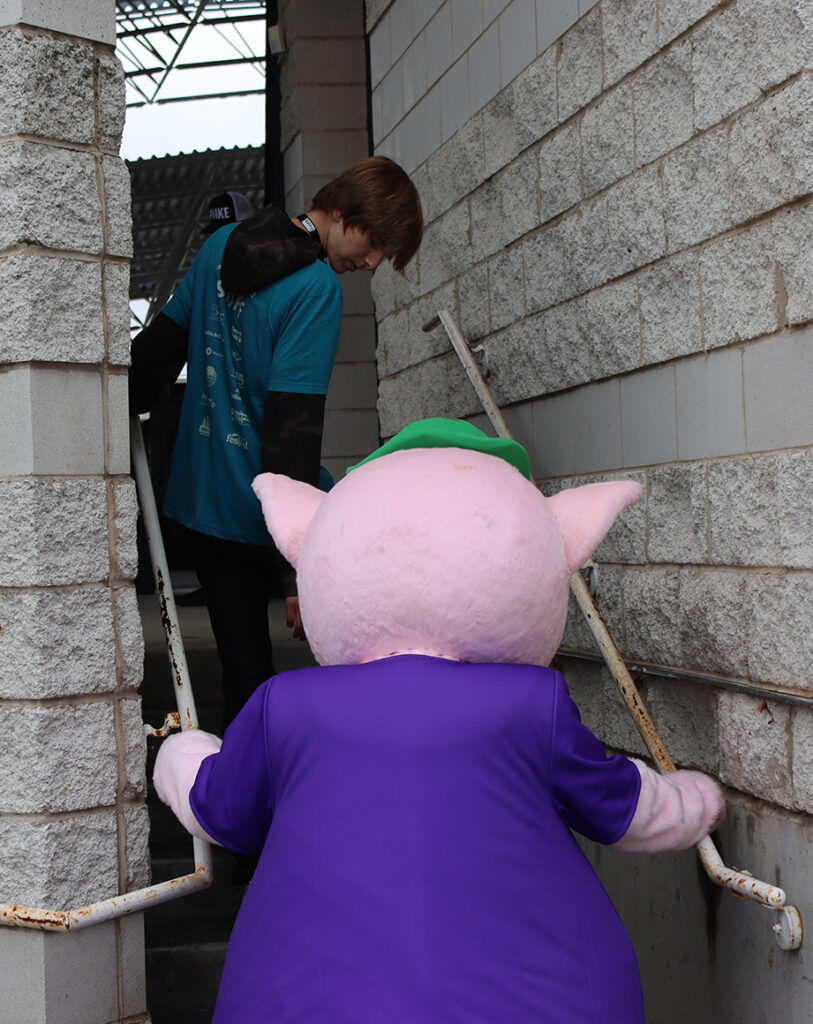
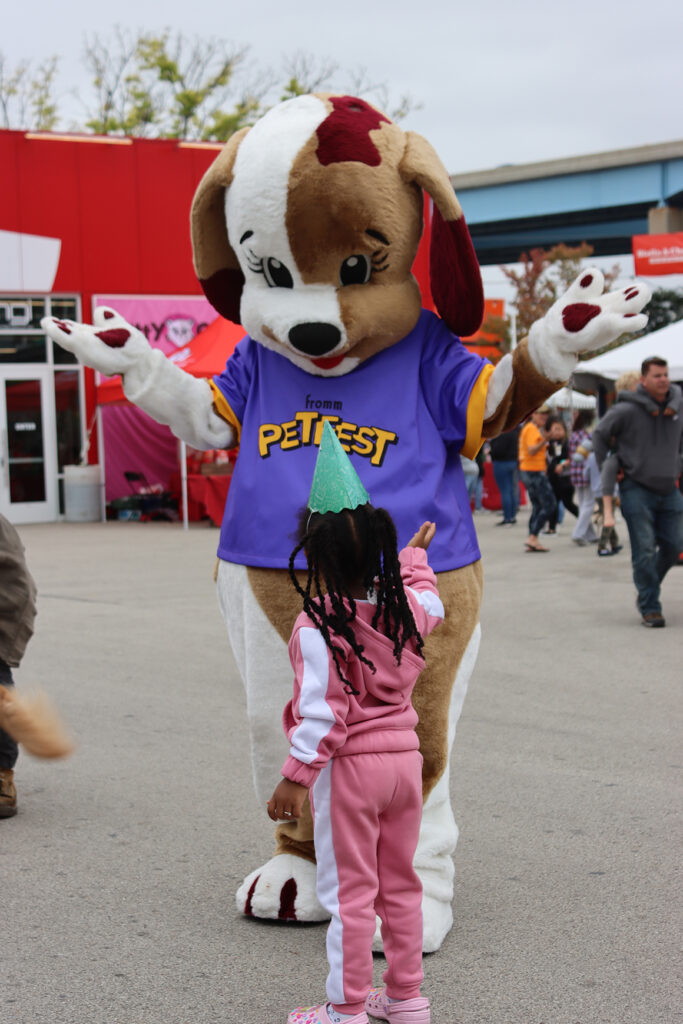
We recommend reading our mascot vision blog to get a feel for what a performer can and cannot see. Understand that many costumes have little to no peripheral vision vertically or to the side. This can mean your performer sees nothing except what is directly in front of them. Unfortunately, objects, people, or changes in terrain come in at all angles. Tell your mascot what is happening around them. Some examples may include…
“Hey Porky, you got a little one behind you.” (Referring to a child approaching the mascot to the rear)
“Careful in front of you Ernie, there is a tripping hazard followed by a downward slope, I will hold your hand to guide you down it”
“Ok Porky, we are going to pose for a picture, turn your head slightly to the left to look at the camera.”
“Ok Ernie, we’re headed up some stairs now, I will put your hands on the guiding rails, and will tell you when you’ve reached the final step.”
For the most part, the performer can see enough to complete high-fives, walk around, and interact with people without a handler needing to intervene. A performer certainly isn’t walking around blind, but it’s those close encounters that you need to watch out for as a handler. Even though we maximize performer visibility in the suits we produce, it’s always a good practice to over communicate obstacles rather than assume they can see them.
Mascot suits can be cumbersome, especially in the head area. Oftentimes a performer can’t see or reach certain areas of the costume. Take this as an example:
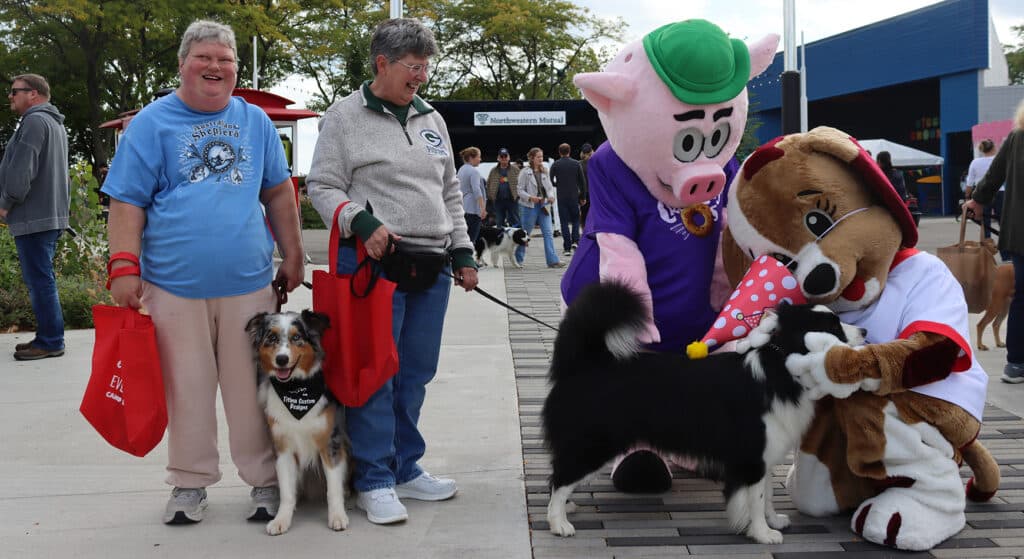
Notice how Ernie’s birthday hat is falling off? Immediately following this interaction with a fan, the mascot handlers jumped in to fix his hat.
The Performer had no idea the hat was falling off until it was too late. Thankfully the handler was quick to react to keep up the illusion for the surrounding audience.
Another area where a mascot handler was useful was during the suit-up process. The zipping up of the back end of the suit and adjusting the padding had to be done by the handler exclusively, as the performer had no hope of reaching those areas to do it themselves.
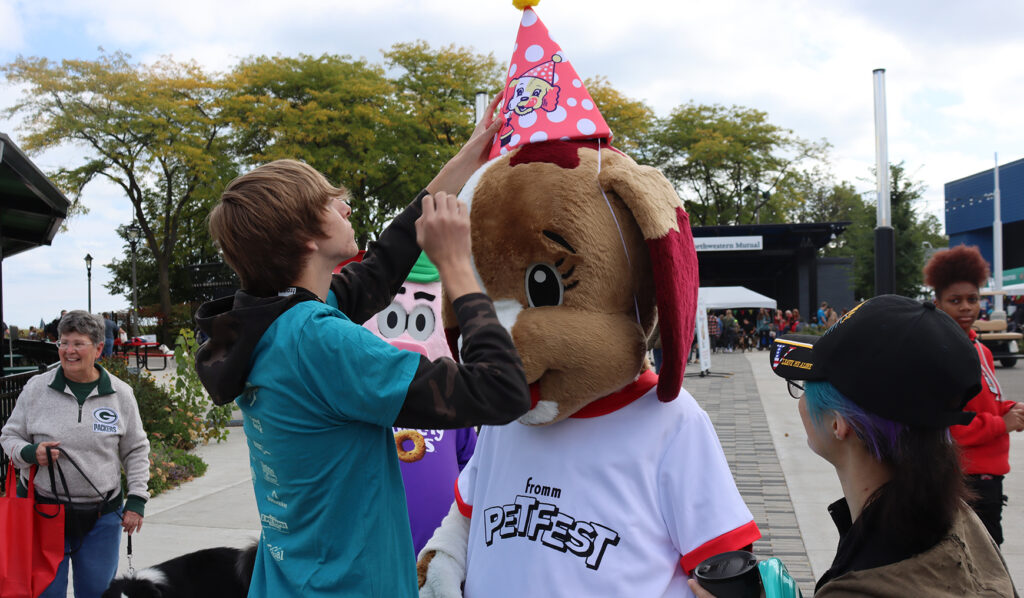
Occasionally, mascots need to be in certain places at certain times. It is the handler’s job to let the performer know how long they have until their next commitment is scheduled. That way you can both start wrapping up what you’re currently doing and start heading in the right direction. If you’re running short and time and there is still a long line of people to take a picture with your mascot, it may be worth saying, “Hey everyone, Ernie needs a break, but he’ll be back here in about 30 minutes for more photos!”
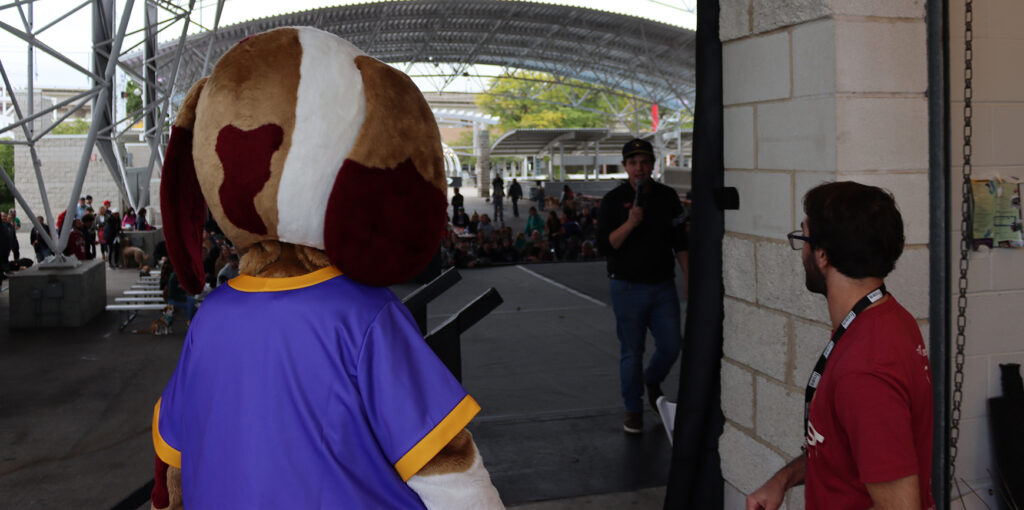
We’ve all been troublemakers at one point or another, and for any prankster, a mascot could be the perfect target. You don’t have to be a bodyguard, but be an active presence around your mascot, especially when there are rambunctious teenagers about. Oh, and watch out for silly string!
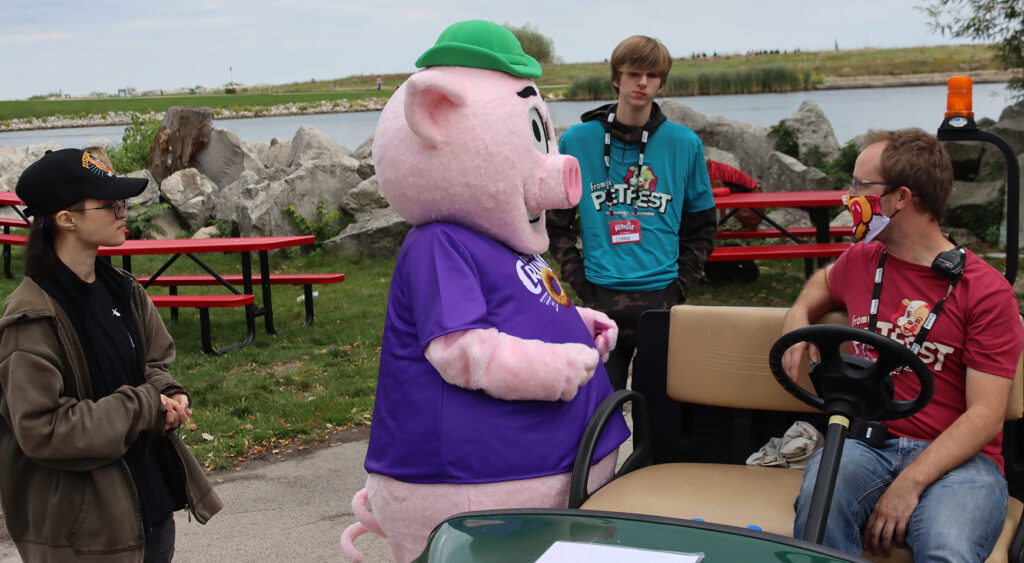
Some other things we want to quick touch on before we conclude:
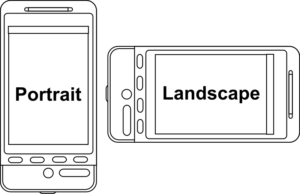
Have you been put in charge of handling the purchase of a mascot? We can assist you!
Please click here or fill out the form below to speak with one of our mascot experts!

Training to Become a Racing Mascot
Have you been given the chance to race as a racing mascot? This blog will tell you everything you need to know to get that 1st place trophy. Let the training begin!

Mascot Feet: Putting Your Best Foot Forward
From bird feet to sneakers, there are many different kinds of mascot feet. Mascot branding is super important for a mascot’s identity and mascot feet can help to complete that character.

Need a fresh version of your beloved mascot? Olympus Mascots specializes in mascot replication, ensuring a perfect match in materials, colors, and details. Keep your mascot’s legacy alive—learn more today!
Custom Mascots
Mascot Services